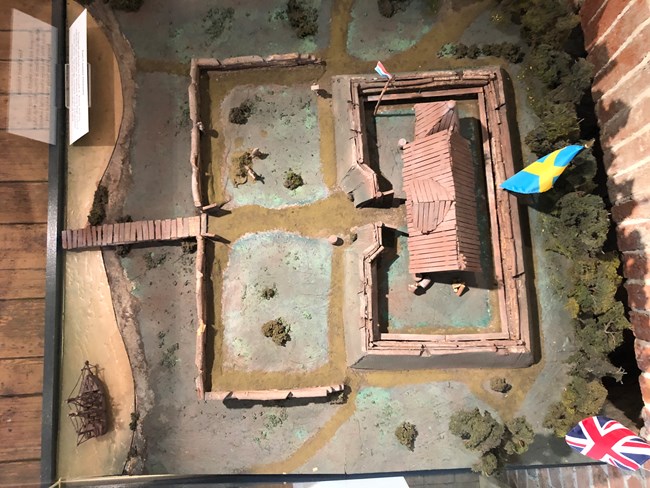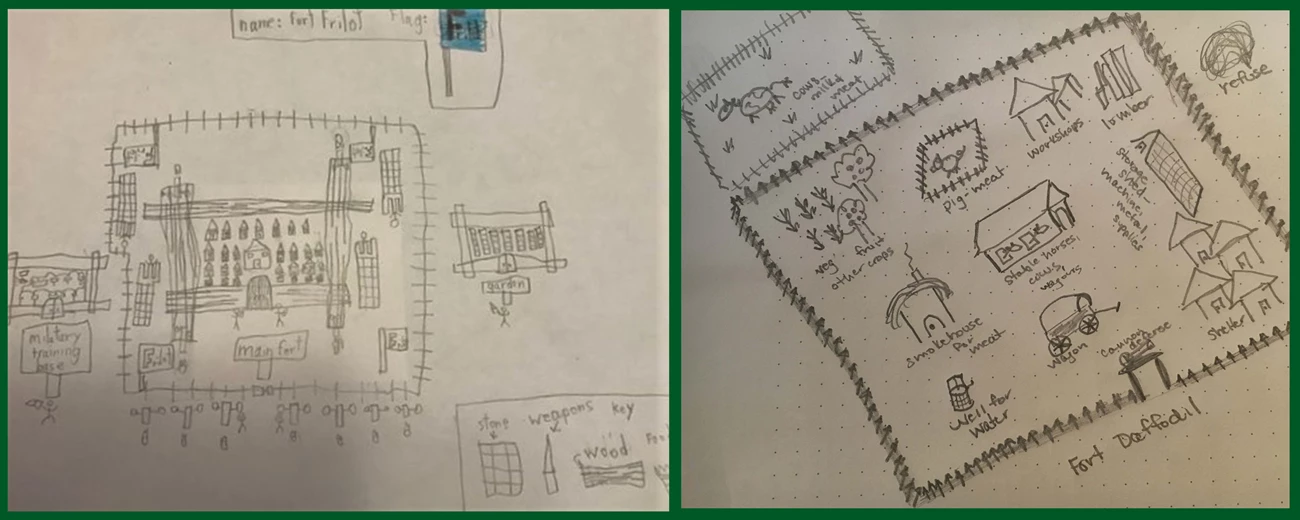Last updated: January 5, 2022
Article
Create a Fort

When you see or hear the word "highways," I bet pictures of wide, multi-lane roads, with big trucks and lots of cars, come to mind. But highways weren't always hard surfaces for vehicle travel! The function of highways today, used to take place on major waterways. Through the 1700s, ships and boats would navigate them to explore new places, trade, purchase and sell items, and to travel to and from their favorite places.
These early European settlers did not come to the New World empty handed. They filled their ships with people that had the necessary skills needed to survive, and brought supplies and trade goods that would allow them to sail across the Atlantic, build homes, grow food, and establish trade with the native peoples. However, they needed to choose wisely, because their ships could only hold so much weight.
Before you can build a fort, you will need to decide what 3 jobs and what 10 items you will bring with you on your journey. Below are some questions that might help you get started.
- Take a moment to think about what jobs you benefit from in your community in a year? Did you visit the doctor or perhaps you went out to dinner with your parents the other night and a chef prepared your meal. Those are both jobs that you could bring, but are they the most beneficial? Only you can decide! Talk with others in your house to see what they think. When you are ready, create a list of your top 3 jobs and explain why you choose them.
- Now that you know the jobs you will bring, it is time to start thinking about what items you would like to bring with you! Take a look around your house and see what things you need to survive or use everyday - make sure you look in the kitchen too! After you have walked around, talk with others in your house to see what they use. Did you find anything that you could bring with you on your journey: to trade, things people need to do their job, or perhaps you found some tools you may need to construct your fort. When you are ready create a list of your top 10 items and explain why you choose them.
When early European settlers arrived in Delaware in the early to mid-1600s, they built their forts strategically on waterways, along the Delaware Bay and River. Why do you think they choose to build them on the water instead of inland? There are multiple First State National Historical Park sites related to these landings, like Fort Casmir which is pictured above in a diagram and displayed at the New Castle Court House Museum.
Huzzah! You have made it across the ocean to The New World, and it is now time to build your fort!
Materials Needed:
Before we get started you will need to decide how you want to create your fort, below are some ideas, but we encourage you to use your creativity.
- Pencil
- Eraser
- Paper
- Colored pencils, markers, or crayons (optional)
- Play-doh or clay
- Toothpicks to hold up the flag (optional)
- Popsicle sticks for fencing (optional)
- Computer, laptop, or mobile device
- Your favorite paint or sketch program or app
Now that you have determined what materials you are going to use to make your fort, it is time to get started!
-
Make a list of items and supplies that you need to have within, or nearby, your fort for your community to survive. For example, some items may include: fresh water, lumber/wood, and food sources like fruit, vegetables, meat.
-
Draw, sculpt or construct your fort, but make sure you include the items from your list!
- To become official, you will need to name your fort and create a flag to mark your fort; you can choose a flag from any country or create your own unique flag!
Share your fort on social media using #FindYourPark / #EncuentraTuParque and tag us @FirstStateNHP for a chance for it to be featured below.

